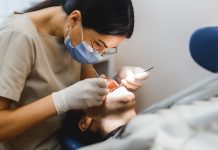Sarah Williams, Senior Health Information Officer at Cancer Research UK sheds light on the increased number of skin cancer diagnoses and the importance of prevention…
More than 100,000 cases of skin cancer are diagnosed each year in the UK. Most of those are non-melanoma skin cancer, which is much more common than malignant melanoma, the most serious type. Over the past few decades rates of melanoma have increased in all age groups – with around 13,300 cases in the UK in 2011. But at the same time we’ve seen huge strides made in diagnosis and treatment with around 9 in 10 people now surviving malignant melanoma.
There are a number of factors behind the increase in melanoma rates. The boom in sunbed use and popularity of relatively cheap, sunny foreign holidays over roughly the same period are likely to have played a part. Particularly as they are associated with the short, intense exposures to ultraviolet (UV) light that are known to be linked to melanoma development. These are also typical of the exposures people might experience if they are seeking to suntan. So the quest for a tan could be having negative consequences for people’s health – despite the popular but mistaken belief that tanned skin is a sign of good health.
Increased detection of skin cancer may also be behind increasing melanoma rates, partly due to awareness campaigns encouraging people to be aware of any changes to their skin and to report them to their GP. Earlier detection of skin cancer greatly improves the chances of successful treatment and, along with ensuring patients have prompt access to optimal treatment, is one of the main ways to reduce skin cancer deaths.
But increasing rates of diagnosis coupled with the much smaller increases in melanoma death rates suggests an additional possibility – over-diagnosis. Some cancers are very slow growing, and would never have harmed someone within their lifetime. But at the moment not enough is known about the disease to make a reliable distinction between these slow-growing cancers, which can be safely left alone, and more aggressive disease which should be treated without delay. While over-diagnosis doesn’t mean we shouldn’t improve prevention of skin cancer it does sound a note of caution in rushing to act based solely on incidence trends.
Melanoma is a largely preventable cancer, with more than 8 in 10 cases caused by excessive UV exposure. The picture is complicated by the issue of vitamin D which is produced by sunlight and necessary for bone health – but most people should be able to find a balance and get enough sun exposure to produce sufficient quantities of vitamin D, without increasing the risk of skin cancer. The National Institute for Health and Care Excellence (NICE) is drafting guidelines on how the risks and benefits of sunlight exposure can best be communicated to the public.
The most effective ways to reduce the risk of skin cancer are to limit the time spent in strong sun – such as by spending time in the shade – and to cover skin with protective clothing, such as a hat and long sleeved shirt, and wearing sunglasses. But, most people tend to rely largely on sunscreen, which can’t provide complete protection even when it is used in the best possible way.
There is a need for well-funded prevention campaigns to raise awareness of the most effective ways people can reduce their risk of skin cancer. Such campaigns should also help the public to understand when and where they may be at risk. For example the growing use of the UV Index in weather forecasts is a positive step, but there is a need to educate the public about what it means for the individual.
Sarah Williams
Senior Health Information Officer
Cancer Research UK

























